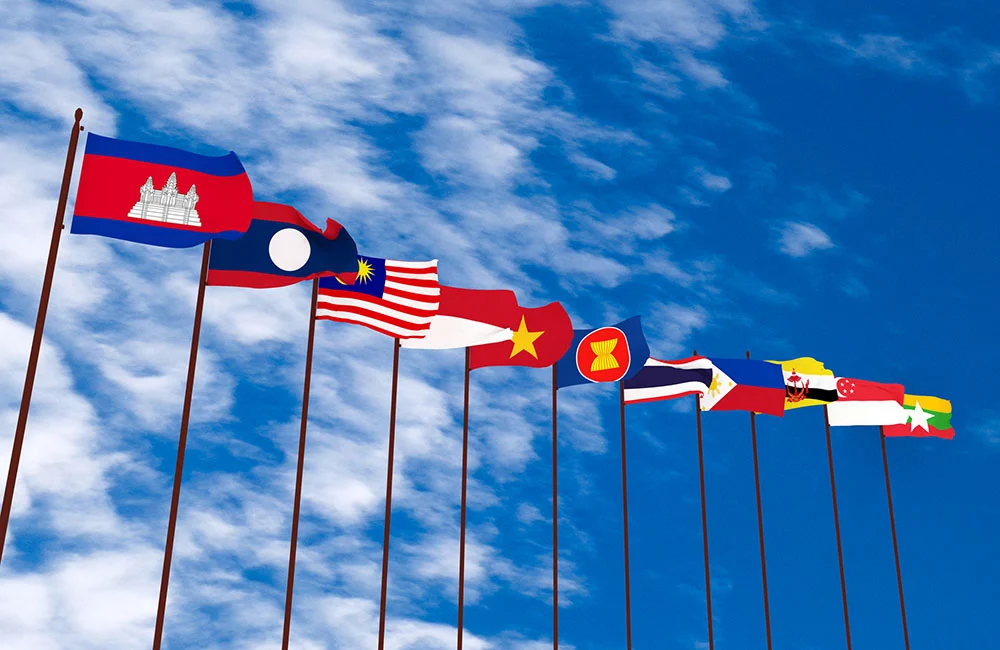From the Four Great Inventions to DeepSeek: Is China Reclaiming Its Place at the Forefront of Cutting-Edge Innovation?
In 2014, the Harvard Business Review published an article titled “Why China Can’t Innovate” which argues that China is incapable of cutting-edge innovation.[1] While affirming the country’s achievements in adaptation innovation, the article raises doubts about its capacity to unlock the “true spirit of entrepreneurship” under the CCP’s rule, where the flow of ideas is much constrained.[2] In other words, China excels at imitation but not innovation. This is true. China has been at the forefront of leveraging digital technologies and application innovation to transform civil society and improve daily life. All a Chinese person needs when leaving home is a smartphone, as everything can be paid for using digital wallets such as WeChat and Alipay. Facial recognition technology has simplified long-distance travel as well, requiring only a quick face scan to board the subway or train. China’s strength lies in its creative adaptation of existing application technologies, particularly in the civilian sector. The United States has always been the global leader in pioneering scientific and technological advancements. But will our generation witness a shift in this dynamic? Or put differently, will China rise alongside the U.S. as a leader in technological innovation? With the recent launch of DeepSeek by a Chinese fintech company, China appears to be moving beyond application commercialization and actively participating in the global race of technological advancement.
Conventional wisdom holds that most innovations done by Chinese companies are process-driven or incremental, and cutting-edge inventions are rare.[3] But this assumption proved to be increasingly outdated as the country has made significant progress in key tech developments. In addition to its leadership in telecom, civilian drones, and high-speed rail, China is rapidly advancing in civil aviation, supercomputers, quantum-secure communication, and AI development.[4] The China-US high-tech rivalry has further accelerated China’s push for innovation. Amid the escalating bilateral competition, the United States has imposed a series of sanctions aimed at restricting China’s access to advanced semiconductors and AI technologies. Notably, these measures include export bans on cutting-edge chips from industry leaders like Nvidia.[5] In response, Chinese companies turned to alternatives such as Amazon Web Services and other cloud-based computing platforms to sustain their AI development efforts. However, this workaround was effectively blocked in 2024 when the U.S. tightened restrictions on cloud access, explicitly targeting China.[6] With strong state backing, Chinese firms are at the forefront of technological innovation. For example, Huawei, a Chinese telecom company in 5G equipment, has emerged as a de facto state-backed leader in China’s semiconductor industry, tasked with driving advancements in chip manufacturing. In response to U.S. sanctions, the company established Huawei Precision Manufacturing, a subsidiary dedicated to advancing semiconductor technology.[7] Meanwhile, Huawei’s chip design division, HiSilicon, has been working to minimize dependence on U.S. technology. Although it still utilizes U.S. electronic design automation (EDA) tools, it is progressively developing chips that bypass U.S. technology, including designs based on RISC-V architecture rather than ARM IP.[8]
As far back as 2014, President Xi emphasized that semiconductors are a crucial technology that China must develop domestically as it is central to China’s broader strategy to leverage available resources in the pursuit of technological dominance over the United States.[9] Since 2014, China has made significant investments in the semiconductor industry, introducing incentives such as tax reductions, R&D tax credits, and tariff exemptions on domestically produced or imported equipment to promote firm-level innovation.[10] China still lags behind in high-end chip design compared to U.S. semiconductor firms and Taiwan’s TSMC. However, the projected growth in China’s capacity to produce mid-to low-tech chips and the state’s consistent investment in the R & D sector suggest that China is building a self-sustaining semiconductor ecosystem.[11] Growing tensions with the United States have pushed China to recognize that mere application and imitation of existing technologies are not self-sustaining. To secure its position on the global stage, China must now take a leading role in driving technological innovation, particularly in critical fields like artificial intelligence and semiconductors.
A primary goal of the central government’s new AI strategy is to establish China as a global AI powerhouse by 2030, positioning the country to dominate the international AI race, especially amid the increasing competition with the United States for AI supremacy.[12] The sudden emergence of DeepSeek has sent shockwaves through the Western tech industry. Despite strict U.S. restrictions on chip exports to China, the Chinese company has managed to train its model at a significantly lower cost than OpenAI’s development of Chatgpt. Another remarkable aspect of Deepseek is that its research and development (R&D) team consists largely of graduates from local Chinese universities, with none of them being “returnees” who studied abroad.[13] Did U.S. sanctions on technology and critical minerals against China backfire, making the country more resourceful? The answer is yes. Over the years, the U.S. has implemented a variety of sanctions against China, primarily targeting high-end technologies, including advanced processors and GPUs like Nvidia’s H100 and A100 series.[14] These restrictions were intended to prevent China from gaining access to cutting-edge technologies that could challenge U.S. dominance in high-tech industries and undermine its military supremacy. The U.S. government has limited the export of certain semiconductor technologies, particularly those used for AI, supercomputing, and military applications, while also imposing more stringent licensing requirements on any exports to Chinese companies in these sectors.[15] However, these sanctions have compelled the Chinese enterprises to become more innovative and resourceful, prompting them to seek alternative solutions and develop strategies to achieve outcomes that were once thought impossible without top-tier hardware. It is in this environment that DeepSeek has emerged, challenging prevailing assumptions about how cutting-edge innovation must be pursued.[16] Instead of relying on high-end hardware, Chinese AI firms like DeepSeek have embraced an “efficiency race,” focusing on enhancing the performance of AI models and algorithms on less powerful hardware.[17] Another significant breakthrough of Deepseek is its “democratization” of AI technology, demonstrating that AI is no longer confined to a few profit-driven tech giants.[18]
China had historically functioned more as a factory for assembly and imitation rather than a cradle for innovation after its establishment as a modern nation-state. However, we see that over the years, the nation has made persistent and dedicated investment in R&D in key tech developments to quickly strengthen its technological capabilities as a rising power. Unlike countries like Canada, where R&D primarily takes place in universities and public research institutions, innovation in China is predominantly driven at the firm and business level. The escalating U.S.-China technological rivalry and the U.S. sanctions limiting Chinese access to high-end tech hardware have proven to be a double-edged sword, sparking unexpected creativity and innovation among local firms and businesses. In the case of DeepSeek, the company has leveraged several strategies to overcome the limitations imposed by sanctions and to achieve remarkable advancements in AI technology. Just a week before this Op-ed was written, President Xi Jinping held a rare meeting with business leaders, including Huawei CEO Ren Zhengfei and Alibaba Group co-founder Ma Yun. Xi’s first public meeting with local tech companies’ CEOs highlights the state’s commitment to strengthening domestic technological capabilities and leveraging all available resources in the pursuit of technological dominance over the United States. China and the U.S. have already outpaced other countries in AI development, and with the rise of DeepSeek, China may have a chance to challenge the long-held assumption that cutting-edge innovation can only occur in democratic Western nations.
Lydia completed her undergraduate studies in Economics and Contemporary Asian Studies and is now pursuing a graduate degree at the Munk School of Global Affairs and Public Policy. Her primary research interests include comparative colonialism in Asia, alternatives to Western democracy and neo-liberal models, and femininity in East Asia. Through her work with Synergy, she hopes to shed light on Asia’s diverse and often overlooked stories, while advocating for interdependence and solidarity across the Asian subcontinent.
Bibliography
Abrami, Regina M., William C. Kirby, and F. Warren McFarlan. “Why China Can’t Innovate.” Harvard Business Review, March 1, 2014. https://hbr.org/2014/03/why-china-cant-innovate.
Meng, Chen. 全网都在扒的DeepSeek团队,是清北应届生撑起一片天 [The DeepSeek Team Everyone Is Talking About: Recent Graduates from Tsinghua and Peking Universities Are Holding Up the Sky.] 2025. Zhihu. https://zhuanlan.zhihu.com/p/16523267141.
Habib Lantyer, Victor. How U.S. Trade Sanctions Fueled Chinese Innovation in AI: The DeepSeek Case, 2025. https://doi.org/10.2139/ssrn.5112973
Janjeva, Ardi, Seoin Baek , and Andy Sellars. “Semiconductor Supply Chains, AI and Economic Statecraft | Centre for Emerging Technology and Security.” China’s Quest for Semiconductor Self-Sufficiency , 2024. https://cetas.turing.ac.uk/publications/semiconductor-supply-chains-ai-and-economic-statecraft.
Khanal, Shaleen, Hongzhou Zhang, and Araz Taeihagh. “Development of New Generation of Artificial Intelligence in China: When Beijing’s Global Ambitions Meet Local Realities.” Journal of Contemporary China 34, no. 151 (April 9, 2024): 19–42. https://doi.org/10.1080/10670564.2024.2333492.
Li, Yanfei, Qiang Ji, and Dayong Zhang. “Technological Catching up and Innovation Policies in China: What Is behind This Largely Successful Story?” Technological Forecasting and Social Change 153 (April 2020): 119918. https://doi.org/10.1016/j.techfore.2020.119918.
Poo, Mu-ming. “Reflections on Deepseek’s Breakthrough.” National Science Review, February 12, 2025. https://doi.org/10.1093/nsr/nwaf044.
Triolo, Paul. “The Evolution of China’s Semiconductor Industry under U.S. Export Controls.” American Affairs Journal, December 6, 2024. https://americanaffairsjournal.org/2024/11/the-evolution-of-chinas-semiconductor-industry-under-u-s-export-controls/.
Yucer, Edibe Betul. “How US Sanctions Are Fueling China’s Ambition for Chip Self-Reliance.” TRT World – Breaking News, Live Coverage, Opinions and Videos, October 2, 2024. https://www.trtworld.com/magazine/how-us-sanctions-are-fueling-chinas-ambition-for-chip-self-reliance-18215263.
YIP, GEORGE S., and McKern Bruce. China’s next strategic advantage: From imitation to innovation. MIT Press, 2017.
Zaklyaz’minskaya, E. O. “China’s Scientific and Technological Potential under US Technological Sanctions.” Herald of the Russian Academy of Sciences 92, no. 5 (October 2022): 643–49. https://doi.org/10.1134/s1019331622050070.
- Regina M. Abrami, William C. Kirby, and F. Warren McFarlan, “Why China Can’t Innovate,” Harvard Business Review, March 1, 2014, https://hbr.org/2014/03/why-china-cant-innovate. ↑
- Ibid. ↑
- GEORGE S. YIP and McKern Bruce, China’s next Strategic Advantage: From Imitation to Innovation (MIT Press, 2017). ↑
- E. O. Zakaz Minskaya, “China’s Scientific and Technological Potential under US Technological Sanctions,” Herald of the Russian Academy of Sciences 92, no. 5 (October 2022): 643–49, https://doi.org/10.1134/s1019331622050070. ↑
- Yucer, Edibe Betul. “How US Sanctions Are Fueling China’s Ambition for Chip Self-Reliance.” TRT World – Breaking News, Live Coverage, Opinions and Videos, October 2, 2024. https://www.trtworld.com/magazine/how-us-sanctions-are-fueling-chinas-ambition-for-chip-self-reliance-18215263. ↑
- Ibid. ↑
- Paul Triolo, “The Evolution of China’s Semiconductor Industry under U.S. Export Controls,” American Affairs Journal, December 6, 2024, https://americanaffairsjournal.org/2024/11/the-evolution-of-chinas-semiconductor-industry-under-u-s-export-controls/. ↑
- Ibid. ↑
- Ardi Janjeva, Seoin Baek , and Andy Sellars, “Semiconductor Supply Chains, AI and Economic Statecraft | Centre for Emerging Technology and Security,” China’s Quest for Semiconductor Self-Sufficiency , 2024, https://cetas.turing.ac.uk/publications/semiconductor-supply-chains-ai-and-economic-statecraft. ↑
- Ibid. ↑
- Ibid. ↑
- Shaleen Khanal, Hongzhou Zhang, and Araz Taeihagh, “Development of New Generation of Artificial Intelligence in China: When Beijing’s Global Ambitions Meet Local Realities,” Journal of Contemporary China 34, no. 151 (April 9, 2024): 19–42, https://doi.org/10.1080/10670564.2024.2333492. ↑
- 梦晨, 全网都在扒的DeepSeek团队,是清北应届生撑起一片天, 2025, https://zhuanlan.zhihu.com/p/16523267141. ↑
- Victor Habib Lantyer, How U.S. Trade Sanctions Fueled Chinese Innovation in AI: The DeepSeek Case, 2025, https://doi.org/10.2139/ssrn.5112973. ↑
- Ibid. ↑
- Ibid. ↑
- Ibid. ↑
- Mu-ming Poo, “Reflections on Deepseek’s Breakthrough,” National Science Review, February 12, 2025, https://doi.org/10.1093/nsr/nwaf044. ↑








